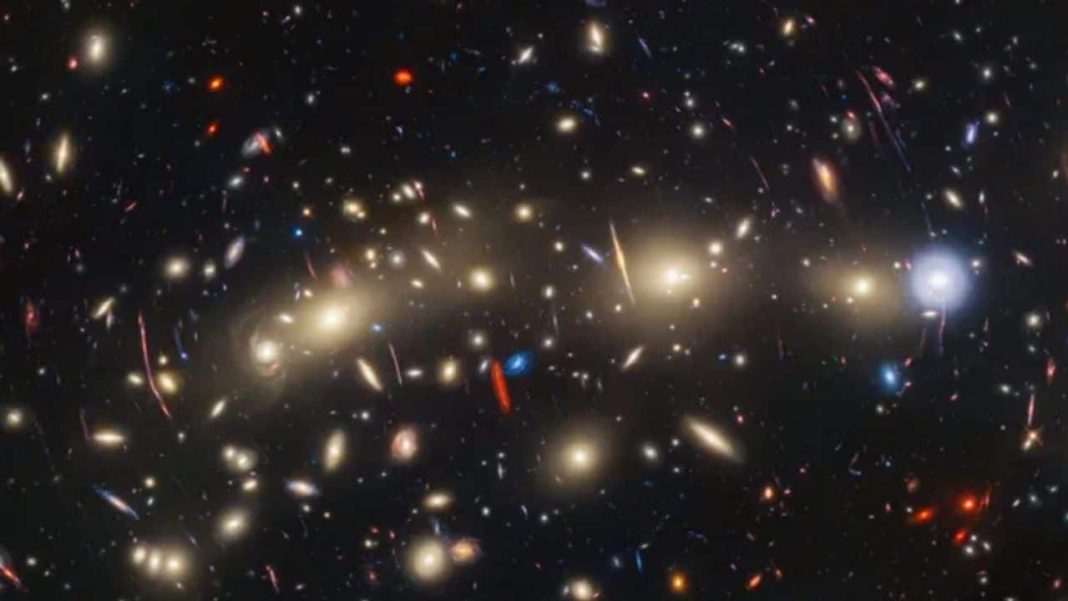The universe, in its earliest infancy, was a dark and mysterious place. For hundreds of millions of years after the Big Bang, there were no stars, no galaxies, just a primordial soup of hydrogen and helium gas. This epoch, often referred to as the “Cosmic Dark Ages,” ended with the ignition of the very first stars – colossal, short-lived behemoths known as Population III stars. Now, humanity’s most advanced eye on the cosmos, the James Webb Space Telescope (JWST), may have peered back far enough to spot their tell-tale signatures, potentially unveiling the genesis of light itself in our universe.
This groundbreaking possibility has ignited excitement across the global scientific community, including India, where a burgeoning interest in space exploration and cosmology continues to grow. From ISRO’s ambitious lunar and solar missions to a vibrant community of astronomers and researchers, the prospect of understanding the universe’s first luminous objects offers profound insights into our cosmic origins.
The Universe’s First Glimmers: A JWST Breakthrough
For decades, astronomers have theorized about Population III stars. Composed almost entirely of hydrogen and helium, the raw ingredients forged in the Big Bang, these stars would have been incredibly massive – hundreds to thousands of times the mass of our Sun – and extremely hot, burning through their fuel at a furious pace. Their lifespans would have been fleeting, perhaps just a few million years, compared to the billions of years for stars like our Sun. Despite their ephemeral nature, their importance is paramount: they were the first factories for heavier elements, seeding the universe with the carbon, oxygen, and iron necessary for subsequent generations of stars, planets, and ultimately, life itself.
Detecting these elusive objects is an immense challenge. They existed at extreme cosmic distances, meaning their light has been stretched by the universe’s expansion into the infrared spectrum – precisely where JWST excels. Its unprecedented sensitivity and infrared capabilities allow it to observe light that has travelled for over 13 billion years, reaching us from when the universe was less than a billion years old. Recent observations by JWST, particularly of extremely distant and faint galaxies, have shown intriguing characteristics that could be indicative of these primordial stars. While not directly resolving individual Population III stars, researchers are finding spectral signatures and properties in these early galaxies that align with theoretical predictions for environments dominated by these first-generation stars.
Unveiling the Cosmic Dawn and Reionization
The discovery, or even strong evidence, of the universe’s first stars would be monumental for several reasons. Firstly, it would confirm a crucial phase in cosmic evolution: the end of the Dark Ages and the beginning of the “Epoch of Reionization.” During the Dark Ages, the universe was filled with neutral hydrogen gas, which absorbed ultraviolet light, making the universe opaque. The intense radiation from these first stars and the nascent galaxies they formed “reionized” this neutral gas, clearing the cosmic fog and making the universe transparent to light, much as it is today. Understanding how and when this reionization occurred is a holy grail of cosmology, and the first stars were the primary architects of this transformation.
Secondly, these stars were the crucible for all elements heavier than lithium. Their explosive deaths, likely as
Dr. Aparna Sharma, a theoretical astrophysicist at the Indian Institute of Astrophysics, commented on the significance, “Spotting the fingerprints of these first stars would be akin to finding the ‘missing link’ in cosmic evolution. It’s not just about what they were, but what they enabled – the entire chemical enrichment of the universe that allowed for everything we see around us. JWST is truly opening up a new frontier in our understanding of deep time.”
While definitive proof is still being gathered and rigorous analysis continues, the potential detection of the universe’s first-ever stars marks a profound moment in humanity’s quest to understand its origins. The James Webb Space Telescope continues to push the boundaries of our knowledge, offering tantalizing glimpses into the very infancy of the cosmos and reminding us of the interconnectedness of all things, from the most ancient star to the very fabric of life on Earth.




